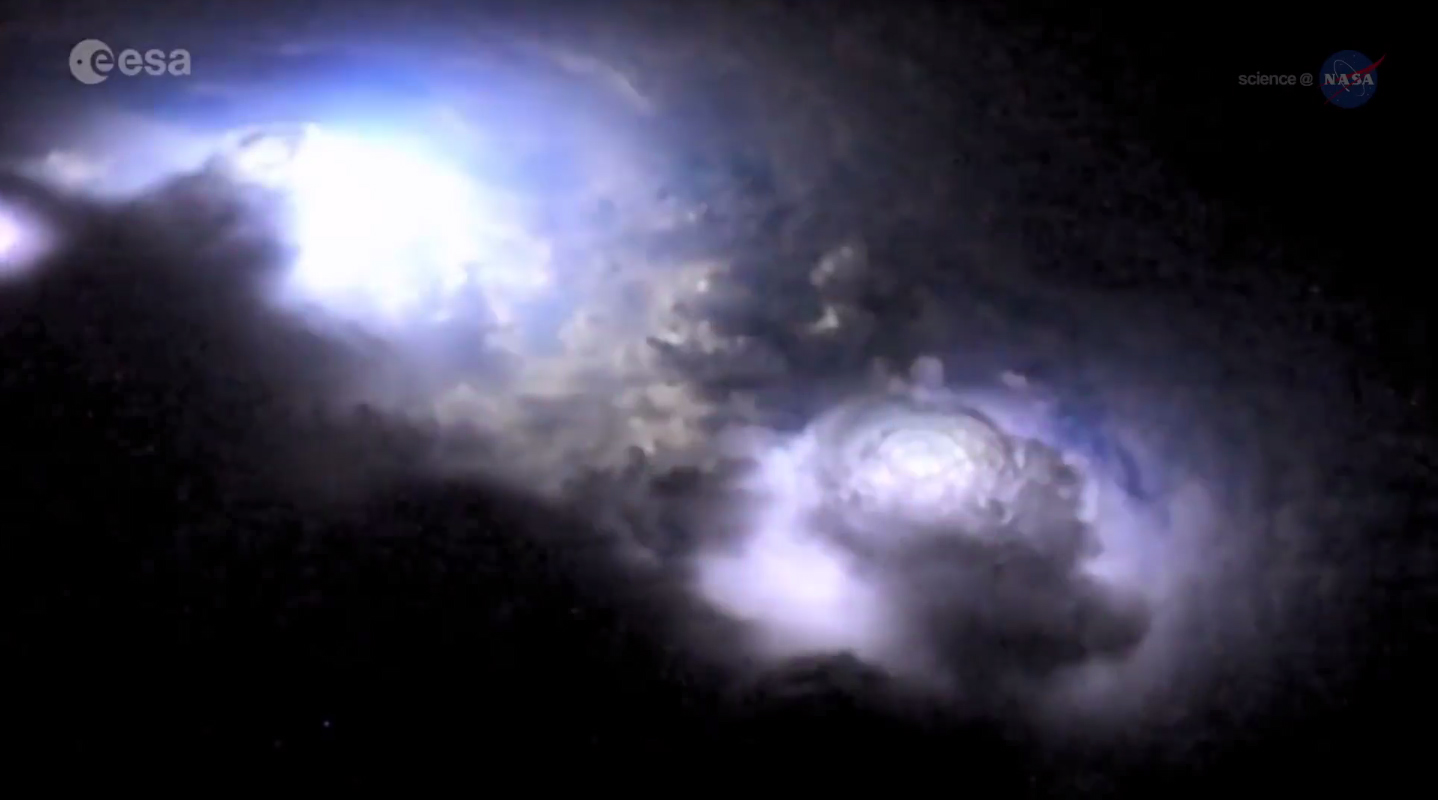Bizarre Blue 'Flashes and Glows' May Reveal Thunderstorm Secrets
Bright, blue flashes stretch from the tops of powerful thunderstorms toward the edge of space, providing a fascinating celestial show for astronauts on the International Space Station, and now, scientists are learning more about these showstopping displays.
In 2015, European Space Agency astronaut Andreas Mogensen captured a video of the strange blue flashes dancing above the clouds as the space station passed over the Bay of Bengal.
These features are called blue jets — a type of transient luminous event (TLE) resulting from activity in and below powerful thunderstorms on Earth. One of the photographs captured by Mogensen showed a pulsating blue jet that stretched 25 miles (40 kilometers) above sea level, according to a statement from NASA. [Earth From Space: Amazing Astronaut Photos]
Using these observations, researchers from Denmark's National Space Institute studied the elusive features to learn more about how storms form and develop over time. Their findings showed that 245 pulsating blue discharges were observed during the 160 seconds of video footage, which is equal to roughly 90 blue-jet flashes per minute, the researchers said in a new study describing the findings.

The study also revealed evidence of red sprites, which glow in the upper atmosphere following large lightning flashes on Earth. Red sprites are difficult to detect because they last only a few milliseconds.
In fact, visual evidence of TLEs wasn't available until 1989. Some of the first observations of these events were of red sprites photographed by cameras on board the space shuttle, as well as from images taken during a NASA and University of Alaska airborne campaign.
Recently, however, astronauts aboard the space station have been able to capture various natural light shows on camera, including red sprites over two different storms within 3 minutes of each other — first over the American Midwest and then later near the coast of El Salvador. These red sprites, which were spotted in August 2015, stretched roughly 60 miles (100 km) above Earth, according to the statement.
Get the Space.com Newsletter
Breaking space news, the latest updates on rocket launches, skywatching events and more!
Observations of strange atmospheric features like red sprites and blue jets help improve researchers' understanding of lightning and thunderstorms, which can lead to better storm models and weather forecasts. Furthermore, researchers also aim to learn more about why storms produce different TLEs in different circumstances.
"TLE studies have been, to an extent, fortunate observation," Tim Lang, an atmospheric scientist at NASA's Marshall Space Flight Center, said in the statement. "We've gotten better at finding them, but it's mostly case-based analysis."
Researchers will soon have the opportunity to capture even better storm observations from space using NASA's Lightning Imaging Sensor, which was installed on the orbiting lab in February 2017, and the Atmosphere-Space Interactions Monitor, which is slated to launch to the space station later this year. These instruments will allow researchers to analyze storms from both below and above, and closely examine thunderstorms' impact on Earth's atmosphere.
Follow Samantha Mathewson @Sam_Ashley13. Follow us @Spacedotcom, Facebook and Google+. Original article on Space.com.
Join our Space Forums to keep talking space on the latest missions, night sky and more! And if you have a news tip, correction or comment, let us know at: community@space.com.

Samantha Mathewson joined Space.com as an intern in the summer of 2016. She received a B.A. in Journalism and Environmental Science at the University of New Haven, in Connecticut. Previously, her work has been published in Nature World News. When not writing or reading about science, Samantha enjoys traveling to new places and taking photos! You can follow her on Twitter @Sam_Ashley13.









